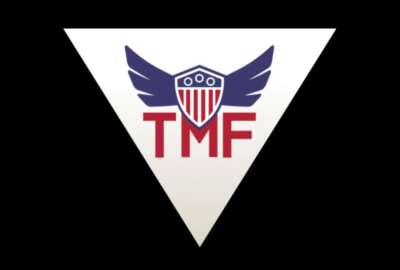Technology Modernization Fund getting a legislative facelift
A new bill from Rep. Nancy Mace (R-S.C.) would extend the Technology Modernization Fund Board by five years and add some more specifics about the repayment...
The Modernizing Government Technology Act, the most significant federal IT law in the last decade, is on tap to get a renovation.
Rep. Nancy Mace (R-S.C.), the chairwoman of the Oversight and Reform Subcommittee on cybersecurity, IT and government innovation, will introduce the MGT Reform Act today, and the full committee is expected to mark it up on Wednesday.
Rep. Gerry Connolly (D-Va.), has signed on as a co-sponsor of the bill, Federal News Network has learned.
“This reauthorization bill is a welcome demonstration of support for the MGT Act and the Technology Modernization Fund,” Connolly said in an email to Federal News Network. “It follows the critical $1 billion appropriation Congress provided the TMF as part of the American Rescue Plan, which I was proud to fight for.”
The MGT Reform Act, obtained by Federal News Network, would extend the Technology Modernization Fund Board to 2030. It was set to sunset in 2025.
The legislation also tightens up some of the language around the repayment of the TMF “loans” or investments.
It removes the ability of OMB to give agencies a waiver that would allow them more than five years to repay the loans. The reform act also requires the General Services Administration, which manages the TMF, to receive enough money back from agencies to keep the fund operational until December 2030.
A former Office of Management and Budget official, who supported TMF and requested anonymity in order to speak about a draft bill, said the reform act doesn’t make any transformational changes, but shores up some parts of the MGT Act that needed some extra attention.
“There is nothing wrong with the bill. It addresses some of the issues that were always there like the sunset of the TMF embedded in the MGT Act,” the former official said. “I think Congress has been clear that the way the Biden administration has managed the repayment process, Congress wants greater visibility and accountability into how agencies are making repayments. This bill tries to do that.”
Another change specifies that the TMF Board should focus its investments on projects that would have the “greatest impact on modernizing, retiring or replacing federal legacy information technology systems.”
The former OMB official said the reason the bill specifically called out the focus on TMF investments is to reiterate the goal of the program.
“It says don’t build new stuff, but fix things that are broken. It’s not a hammer. It’s more of an olive branch to remind agencies why the fund exists,” the former official said. “I think the reform act is tightening controls in several areas because the MGT Act gave OMB a lot of flexibility initially to manage the TMF. I think Congress is being more clear on what they expect, which is why language on repayment and other reporting requirements like cost savings and how the projects are going, is in there. I think there is a bit of Congress saying we believe in the TMF as a concept and if you give us more to work with, we can be better partners to make sure the TMF is funded appropriately.”
House and Senate lawmakers have not been as supportive of the TMF in the most recent spending bills for 2023 and the one under development for 2024.
In the draft of the 2024 Financial Services and General Government bill, Senate appropriators rescinded $290 million from the TMF. The House Appropriations Committee, meanwhile, zeroed out funding for next fiscal year. The Biden administration requested $200 million for the TMF in its 2024 budget request. The TMF board received $50 million in 2023 from Congress.
Stronger oversight authority
The draft bill also would add a provision to guard against future problems like what the board experienced with the Login.gov platform business case. Lawmakers are adding a provision to the bill that would give the TMF Board explicit authority to terminate or suspend a project if it identifies “fraudulent or misleading statements in the project proposal, including fraudulent statements about technical design, the business case, or program management.”
In addition to updating the MGT Act and TMF provisions, Mace is including a requirement for agencies to submit to OMB an inventory of their high risk and legacy IT systems by Sept. 30. OMB will compile that inventory and submit a list of the 10 systems that provide the “greatest security, privacy and operational risks to the federal government” to Congress by Dec. 30.
The IT inventory requirement follows similar efforts in 2022 by Sen. Maggie Hassan (D-N.H.) that also included not just an inventory, but plans for how to get out from under the technical debt.
The former OMB official said the bill misses an opportunity to tie the TMF funding to those systems listed in the IT inventory. The bill would require OMB to spotlight the top 10 systems that need the most attention, but says nothing about making sure TMF funding goes toward those systems.
“There is nothing transformational in this bill. It just makes things more clear that were maybe were less clear in the initial MGT Act,” the former official said. “What the bill doesn’t do is it doesn’t change or address how Congress and the administration will oversee and get more results from the $100 billion in investments around federal IT. I’m not sure why they are spending limited political capital when there are bigger IT challenges to address.”
Copyright © 2025 Federal News Network. All rights reserved. This website is not intended for users located within the European Economic Area.
Jason Miller is executive editor of Federal News Network and directs news coverage on the people, policy and programs of the federal government.
Follow @jmillerWFED







